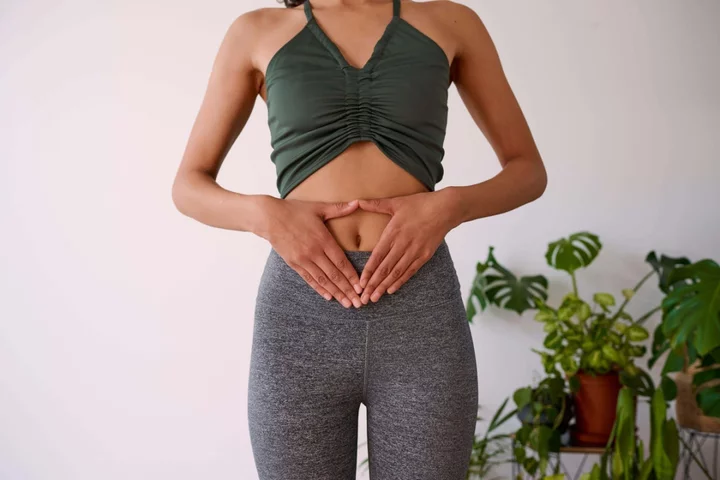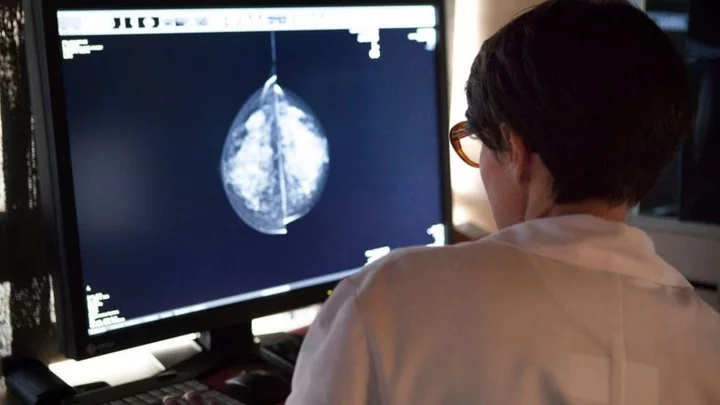
How to Stop Your Dog From Pulling on Their Leash, According to a Professional Trainer
walks give dogs a chance for them to explore and interact with the environment around them. Here's how to stop them from dragging you along for the ride.
2023-08-03 05:21

The 20 U.S. Cities American Tourists Love and Hate the Most
If you're planning a trip to a U.S. city, here are some destinations to consider—and some to possibly reconsider.
2023-08-03 04:21

There’s a Scientific Reason Why Some People Love the Smell of Gasoline
If you find the pungent aroma of gas pleasant at the pump, you're not alone. Here's why fuel tickles your brain.
2023-08-02 22:54

What is premenstrual dysphoric disorder?
Premenstrual Dysphoric Disorder (PMDD) is a severe form of premenstrual syndrome (PMS), and is thought to affect more than one in 20 menstruating women. Actor and stand-up comedian Bella Humphries suffers from PMDD, and told the BBC: “My period sometimes makes me want to take my life.” According to the International Association for Premenstrual Disorders (IAPMD), 34% of the people who have been diagnosed with the condition have attempted suicide. Humphries, 29, continued: “It’s secrecy and silence that will kill people, not the disease or the disorder.” According to the IAPMD, it takes on average 12 years to be diagnosed with the condition. Here’s everything you need to know about it… What is PMDD? PMDD is a severe form of PMS, and is characterised by debilitating physical and emotional symptoms that occur during the time between ovulation and when the period is due to begin. This is known as the luteal phase and lasts around two weeks – although the length can vary from person to person. In June 2019, the World Health Organisation (WHO) added PMDD to the International Statistical Classification of Diseases and Related Health Problems, meaning it’s now recognised as a legitimate medical diagnosis. What are the symptoms? People with PMDD might experience a broad range of symptoms, and it’s different for everyone. “In PMDD, symptoms are extreme and can seriously impact quality of life, work and relationships. Many women report feeling suicidal,” said Dr Ghazala Aziz-Scott, a specialist in integrative women’s health and bioidentical hormone balancing for the Marion Gluck Clinic. “Symptoms can be cyclical and chronic – they include mood swings, anger, irritability, anger, anxiety, depression, anhedonia [the reduced ability to experience pleasure], fatigue, and brain fog. Physical symptoms include breast tenderness, headaches, bloating, food cravings, and insomnia.” Are there any treatments? Treatments can include “antidepressants, oral contraception and counselling”, said physician associate Simisola Ade. “A discussion with a doctor should be had to decide on what treatment is appropriate and how bad the PMDD symptoms are.” Aziz-Scott continued: “PMDD has a complex aetiology [causes] and it is vital to evaluate the root cause of the hormonal imbalance and if there are also any coexisting psychiatric conditions. “A healthy diet and good lifestyle can go a long way in supporting the body, B6 and magnesium supplementation are helpful and the use of natural progesterone in the second half of the cycle can be very beneficial.” What other things can people do to help? “Women who have PMDD need to be mindful and easy with themselves. Self-care is very important,” said Ade. “Also keeping a cycle diary is key, especially if you suspect you have PMDD, because some people aren’t aware that they have PMDD until they actually start tracking their symptoms and notice that they are cyclical. This can also help diagnosis and treatment be much quicker. “Talking to other people who have PMDD can be very beneficial too. There are international organisations that can help. Be open with your doctor and tailor treatments for yourself to ensure you put things in place when you are in that luteal phase. Getting to know your PMDD symptoms will help to make those symptoms more bearable.” Dr Adiele Hoffman, medical advisor at Flo Health agrees and said: “It’s very common to experience both emotional and physical discomfort in the days leading up to your period. However, these symptoms should not be so severe that they significantly impact your life, work, your family, or your other relationships. “But if they do, however, consistently affect your life, you should show these logs to a doctor. It can be very helpful for the doctor prescribing appropriate treatment. Most importantly, remember that no one should have to live with debilitating PMDD symptoms.” Read More Charity boss speaks out over ‘traumatic’ encounter with royal aide Ukraine war’s heaviest fight rages in east - follow live JW Anderson is teaming up with a major tennis star for new collection N-Dubz cement comeback with first new album in 13 years Irregular sleep patterns linked to harmful gut bacteria, study suggests
2023-08-02 21:54

20 ASL Signs You Don’t Want to Mix Up
While your Deaf friends might get a good laugh when you accidentally sign “f**k you” instead of “thank you,” it’s still best to know the correct signs when interacting within the Deaf community.
2023-08-02 20:16

Broadway star Phillipa Soo is working on picture book about her childhood stage fright
Broadway star Phillipa Soo has not forgotten her childhood stage fright
2023-08-02 20:15

JW Anderson is teaming up with a major tennis star for new collection
Northern Irish designer Jonathan Anderson is collaborating with former tennis player Roger Federer for a new collection with Uniqlo. Federer posted a picture of him with Anderson on Instagram with the caption: “Excited for this one… stay tuned.” The nine-piece unisex collection mixes Anderson’s gender-fluid aesthetic with elements of sporty style. Fleece jackets, sweaters, shorts and parkas are offered in neutral colourways – blacks, whites, greys and blues. Polo shirts are a big feature of the mini collection – and were also seen in JW Anderson’s recent Milan Fashion Week show, where models wore sporty styles and rugby-inspired tops. This is the first time Anderson and Federer are teaming up, but both have long relationships with the Japanese retailer. Federer, 41, has been a brand ambassador for Uniqlo since 2018. This was when he broke off his long-standing deal with Nike, and started wearing Uniqlo outfits on the court. In 2018, it was reported that Uniqlo would be paying Federer around £22 million a year for the next decade. Outside of sportswear, Federer – who retired from professional tennis in 2022 – also models the brand’s lifestyle clothing. The Swiss sportsman told Uniqlo: “My style tends toward simple, muted tones and classic looks. That’s me.” Anderson – who is also the creative director of luxury fashion house Loewe – has been creating collaborative collections with Uniqlo since 2017. His most recent spring/summer Uniqlo collection was described as “a modern interpretation of quintessential British style, as always through JW Anderson’s elegant and playful lens”, and was “inspired by the traditional sports of British universities, putting an athletic twist on classic wardrobe staples”. Federer told WWD: “I’ve always wanted to have a collection perfect for playing tennis while also versatile for the other parts of daily life. “I’m fortunate that Jonathan shared this vision. Together we were able to create a stylish and comfortable line rooted in a classic tennis style. Jonathan is talented, creative and incredibly down-to-earth. It has been a pleasure to work with him on this collection.” Anderson told WWD he was “influenced by watching Roger play” when designing the clothes. He said: “We designed a collection that could be worn in an actual match, for a classic look or just as easily be worn around town. We’ve got something that feels elevated, and it is kind of timeless.” Uniqlo’s Roger Federer Collection by JW Anderson will be available in-store and online on August 28, although that might vary in different regions. Prices range from $39.90 to $89.90 (£31.20 to £70.40). Read More Charity boss speaks out over ‘traumatic’ encounter with royal aide Ukraine war’s heaviest fight rages in east - follow live N-Dubz cement comeback with first new album in 13 years Irregular sleep patterns linked to harmful gut bacteria, study suggests Babies as young as four months have taste in fine art, study shows
2023-08-02 19:18

Leigh-Anne Pinnock unveils the three wedding dresses she wore to marry Andre Gray in Jamaica
Leigh-Anne Pinnock has offered fans a glimpse into her wedding to Andre Gray by sharing a set of exclusive photographs from their wedding album on Instagram. The couple got married in Jamaica on 3 June after six years together; they welcomed twins in August 2021. On Monday (31 July), the 31-year-old Little Mix star shared a series of photos alongside the caption: “03/06/23 I married my soul mate.” The first snap showed Pinnock and Gray kissing at the alter on the beach. Others showed them walking down the aisle hand in hand with the ocean behind them. Pinnock also posted photos of herself with her bridesmaids getting ready for the ceremony, with four of them holding up her skirt as she turned away from the camera. In another post, Pinnock shared photographs of her and Gray walking into their reception dinner holding hands. The two are then seen dancing together and posing later on in the night. “More wedding SPAM incomingggg [sic],” Pinnock captioned the post. The posts reveal that Pinnock and Gray each wore several outfits on the night. For Pinnock, the first gown was an embellished Princess-style gown with a full tulle skirt and an ivory bodice that featured a corset-style top with mesh sleeves. The gown also featured a long train with the words: “We’ve crossed the line”. Gray, who plays football for Greek club Aris, wore a white suit jacket with black trousers for the ceremony, which he then followed with a black waistcoat, black trousers, and white shirt for the reception. For her second outfit, Pinnock chose a silver fishtail gown with a plunging neckline and an open back. Finally, the musician changed into a mesh gown that featured corset-stye boning with a sheer overlay that had a slit up to her thigh. The photos come after Pinnock announced that she is set to release her first memoir. The singer, who performed with Little Mix from 2011 to 2022, shared a video to Instagram on Monday (17 April) announcing her autobiography. In the clip, Pinnock can be seen sipping a cup of tea and reading from the book, before explaining that the memoir is “so special to me”. “I hope you guys love it as much as I do,” she said. “Ever since we won The X Factor back in 2011, I feel like I’ve been in a whirlwind,” she captioned the video. “I’ve had some life-changing moments that up until now, I’ve never really had the chance to process. “Maya Angelou once said, ‘You can’t really know where you are going until you know where you have been’ so with this in mind and before I embark on this new journey, I want to respect my past; my life, my heritage, family, identity and most importantly, embracing & believing in my own power.” Believe will be released on 26 October. Read More Sex and The City author Candace Bushnell once dated a 21-year-old and a 91-year-old in the same week Neelam Gill confirms whether she is dating Leonardo DiCaprio Real Housewives star Teresa Giudice calls Sofia Vergara the ‘rudest woman’ she has ever met Eva Mendes shows dress made out of sponges as she jokes it’ll be her Oscars outfit Christina Aguilera stuns fans with mind-bending purse skirt Fans are obsessed with George RR Martin’s pink Barbie outfit
2023-08-02 18:47

Irregular sleep patterns linked to harmful gut bacteria, study suggests
Irregular sleep patterns may be linked to harmful bacteria in your gut, new research suggests. The study is the first to find multiple associations between social jet lag – the shift in internal body clock when sleeping patterns change between workdays and free days – and diet quality, diet habits, inflammation and gut microbiome (bacteria) composition. According to the findings, even a 90-minute difference in the midpoint of sleep – half-way between sleep time and wake-up time – can encourage microbiome that has negative associations with health. Previous research has suggested that working shifts disrupts the body clock and can increase risk of weight gain, heart problems and diabetes. This is the first study to show that even small differences in sleep timings across the week seems to be linked to differences in gut bacterial species Dr Wendy Hall King’s College London However, according to researchers from King’s College London there is less awareness that the body’s biological rhythms can be affected by smaller inconsistencies in sleeping patterns. This is due to people working regular hours waking early with an alarm clock on workdays compared to waking naturally on non-workdays. Senior author Dr Wendy Hall from King’s College London, said: “We know that major disruptions in sleep, such as shift work, can have a profound impact on your health. “This is the first study to show that even small differences in sleep timings across the week seems to be linked to differences in gut bacterial species. “Some of these associations were linked to dietary differences but our data also indicates that other, as yet unknown, factors may be involved. “We need intervention trials to find out whether improving sleep time consistency can lead to beneficial changes in the gut microbiome and related health outcomes.” First author Kate Bermingham, from King’s College London and senior nutrition scientist at ZOE, said: “Sleep is a key pillar of health, and this research is particularly timely given the growing interest in circadian rhythms and the gut microbiome. “Even a 90-minute difference in the mid-point of sleep can encourage microbiota species which have unfavourable associations with your health.” Researchers suggest the composition of the microbes in the gut may negatively or positively affect health by producing toxins or beneficial products. Specific species of microbes can correspond to an individual’s risk of long-term health conditions such as diabetes, heart disease and obesity. The microbiome is influenced by what food someone eats, which makes the diversity of the gut adjustable. Researchers assessed a group of 934 people from the ZOE Predict study, the largest ongoing nutritional study of its kind. They looked at blood, stool and gut microbiome samples, as well as glucose measurements in people whose sleep was irregular compared to those who had a routine sleep schedule. Unlike past research, the group consisted of mainly lean and healthy individuals with most of them getting more than seven hours sleep throughout the week. The study, published in The European Journal of Nutrition, found that just a 90-minute difference in the timing of the midpoint of sleep is associated with differences in what the gut microbiome is made up of. According to the findings, having social jet lag was associated with lower overall diet quality, higher intakes of sugar-sweetened beverages, and lower intakes of fruits and nuts. This may directly influence the abundance of specific microbiota in the gut, researchers say. Three out of the six microbiota species more abundant in the social jet lag group have what researchers describe as unfavourable associations with health. They are linked with poor diet quality, indicators of obesity and cardiometabolic health, like heart attack, stroke, and diabetes, and markers in your blood related to higher levels of inflammation and cardiovascular risk. Previous research has found social jet lag is associated with weight gain, chronic illness and mental fatigue. Dr Sarah Berry from King’s College London and chief scientist at ZOE added: “Maintaining regular sleep patterns, so when we go to bed and when we wake each day, is an easily adjustable lifestyle behaviour we can all do, that may impact your health via your gut microbiome for the better.” Read More Charity boss speaks out over ‘traumatic’ encounter with royal aide Ukraine war’s heaviest fight rages in east - follow live N-Dubz cement comeback with first new album in 13 years Babies as young as four months have taste in fine art, study shows ADHD symptoms in children can be transformed with brain stimulation therapy
2023-08-02 17:28

AI could be used to assess breast cancer scans
Swedish study found computer-aided detection could spot cancer at similar rate to two radiologists.
2023-08-02 17:25

Babies as young as four months have taste in fine art, study shows
Our taste in fine art can develop from a very early age, researchers have said, after they found babies as young as four months can demonstrate artistic preferences. When shown landscapes by the Dutch post-impressionist painter Vincent van Gogh, psychologists at the University of Sussex found both babies and adults mostly favoured the same paintings, with Green Corn Stalks (1888) proving to be the most popular. The team at the university’s Sussex Baby Lab also uncovered that infants liked paintings that had more edges – such as those featuring leaves or branches – and curved lines. In their findings, published in the Journal of Vision, the researchers said aspects of artistic preferences may be hardwired from an early age. Our study also appears to have identified features of adult aesthetics that can be traced back to sensory biases in infancy Philip McAdams Philip McAdams, a doctoral researcher at the University of Sussex and lead author on the paper, said: “It was fascinating to find that babies respond to the basic building blocks of the paintings, such as edges and colours, and that these properties could explain large amounts of why babies look at, and adults like, particular artworks. “Our study also appears to have identified features of adult aesthetics that can be traced back to sensory biases in infancy. “Our findings show that babies’ visual systems and visual preferences are more sophisticated than commonly thought.” For the study, which was in collaboration with children’s sensory brand, Etta Loves, the researchers recruited 25 babies, aged four to eight months, and 25 adults. The babies sat on their parent’s lap while 40 pairs of images, featuring landscape paintings by Van Gogh, were shown on a tablet. Adults were also shown the same paintings and asked which image in the pair they found to be more pleasant. Recordings showed babies looked longer at the Van Gogh landscapes that adults also rated as most pleasant. These paintings featured high colour and lightness contrasts as well as lots of the colour green. The most preferred Van Gogh painting was Green Corn Stalks whilst the least preferred was Olive Grove (1889). But researchers also found small differences in the artistic tastes between adults and babies. For example, they found that infants preferred paintings that contained the most edges and curved lines, which the adults did not seem to favour. Professor Anna Franklin, head of the Sussex Colour Group and founder of the Sussex Baby Lab, and lead author on the paper, said: “We’ve been amazed by how much the young babies responded to the art. “Although newborn babies’ vision is very blurry, our findings demonstrate that by four months old, babies can see well enough to look longer at some paintings than others, and can pay attention to many of the artistic details.”
2023-08-02 16:16

ADHD symptoms in children can be transformed with brain stimulation therapy
Stimulating the brain using electrodes could help ease symptoms of attention deficit hyperactivity disorder (ADHD) in children, a study has found. Transcranial random noise stimulation (tRNS) works by sending a mild electrical current to the brain through two electrodes on the scalp. The study, led by researchers from the University of Surrey and the Hebrew University of Jerusalem – and published in the Translational Psychiatry journal, explored the use of tRNS alongside cognitive training as a treatment for ADHD. Roi Cohen Kadosh, head of the School of Psychology and professor of cognitive neuroscience at the University of Surrey, said: “I believe that the scientific community is duty-bound to investigate and develop evermore effective and longer-lasting treatments for ADHD.” The clinical trial included 23 newly diagnosed and unmedicated children between the ages of six and 12, who were recruited from groups referred to the ADHD clinic by doctors, teachers, psychologists or parents. Researchers at the computerised neurotherapy lab at the Hebrew University of Jerusalem administered tRNS during cognitive training each weekday over a two-week period. The parents of 55% of the group reported “significant clinical improvement” in ADHD symptoms to researchers, compared to 17% in a control group that was given placebo brain simulation. Prof Kadosh said the findings demonstrate the treatment “has the potential to transform the lives of children and their families”. Future studies, with larger and more varied samples, should help establish this as a viable therapy for ADHD, and help us understand the underlying mechanisms of the disorder Dr Mor Nahum ADHD is a neurodevelopmental disorder and symptoms include hyperactivity, an inability to focus and impulsiveness. According to the National Institute for Health and Care Excellence (Nice), it is present in about 5% of children globally. Researchers are now preparing to start a larger clinical trial using tRNS and cognitive training. “If successful, this approach will be approved as a medical device for ADHD by the United States Food and Drug Administration,” Prof Kadosh said. Dr Mor Nahum is co-lead of the study and head of the computerised neurotherapy lab at the Hebrew University of Jerusalem. She added: “This is an important first step in offering new therapeutic options for ADHD. “Future studies, with larger and more varied samples, should help establish this as a viable therapy for ADHD, and help us understand the underlying mechanisms of the disorder.” Read More Charity boss speaks out over ‘traumatic’ encounter with royal aide Ukraine war’s heaviest fight rages in east - follow live Black LGBTQ+ icons everyone should know Ashley James: ‘We have a totally warped idea of what a mum should be’ Host Maya Jama’s glamorous Love Island outfits cost over £10,000
2023-08-02 15:51
